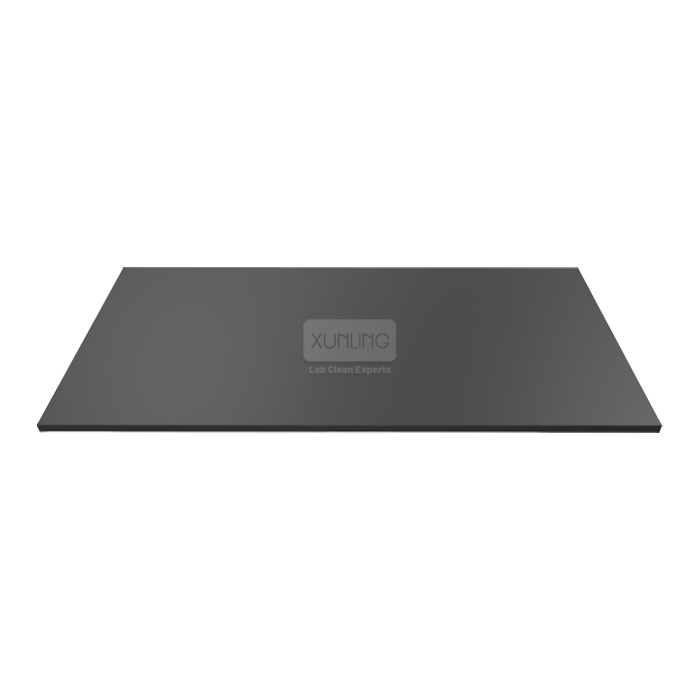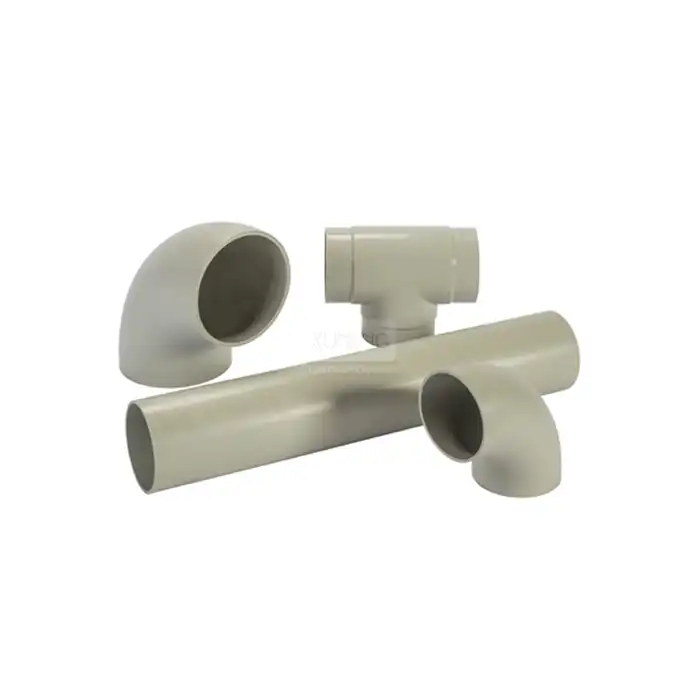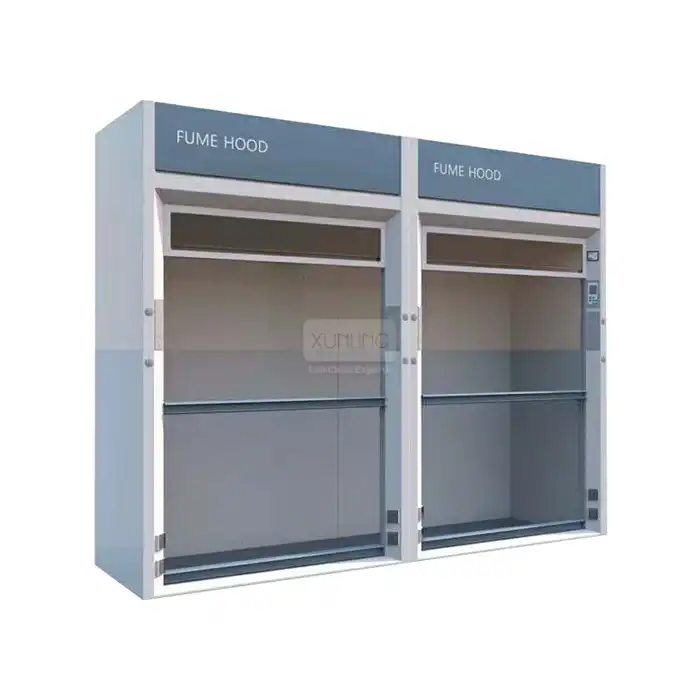
What Factors Should Be Considered When Selecting a Mixed Flow Fan?
2025-06-13 17:44:09
When it comes to selecting the right ventilation solution for your laboratory or industrial setting, understanding the key factors that influence your choice of a mixed flow fan is crucial. Mixed Flow Fans represent an innovative hybrid technology that combines the best features of both axial and centrifugal fans, offering a balance of high airflow capacity and static pressure. This combination makes them particularly valuable in applications where space constraints exist but performance cannot be compromised. When selecting a mixed flow fan, one must consider various critical factors including airflow requirements, noise limitations, installation space, environmental conditions, energy efficiency, construction materials, and maintenance needs. Each of these elements plays a vital role in determining which mixed flow fan will provide optimal performance for your specific application.
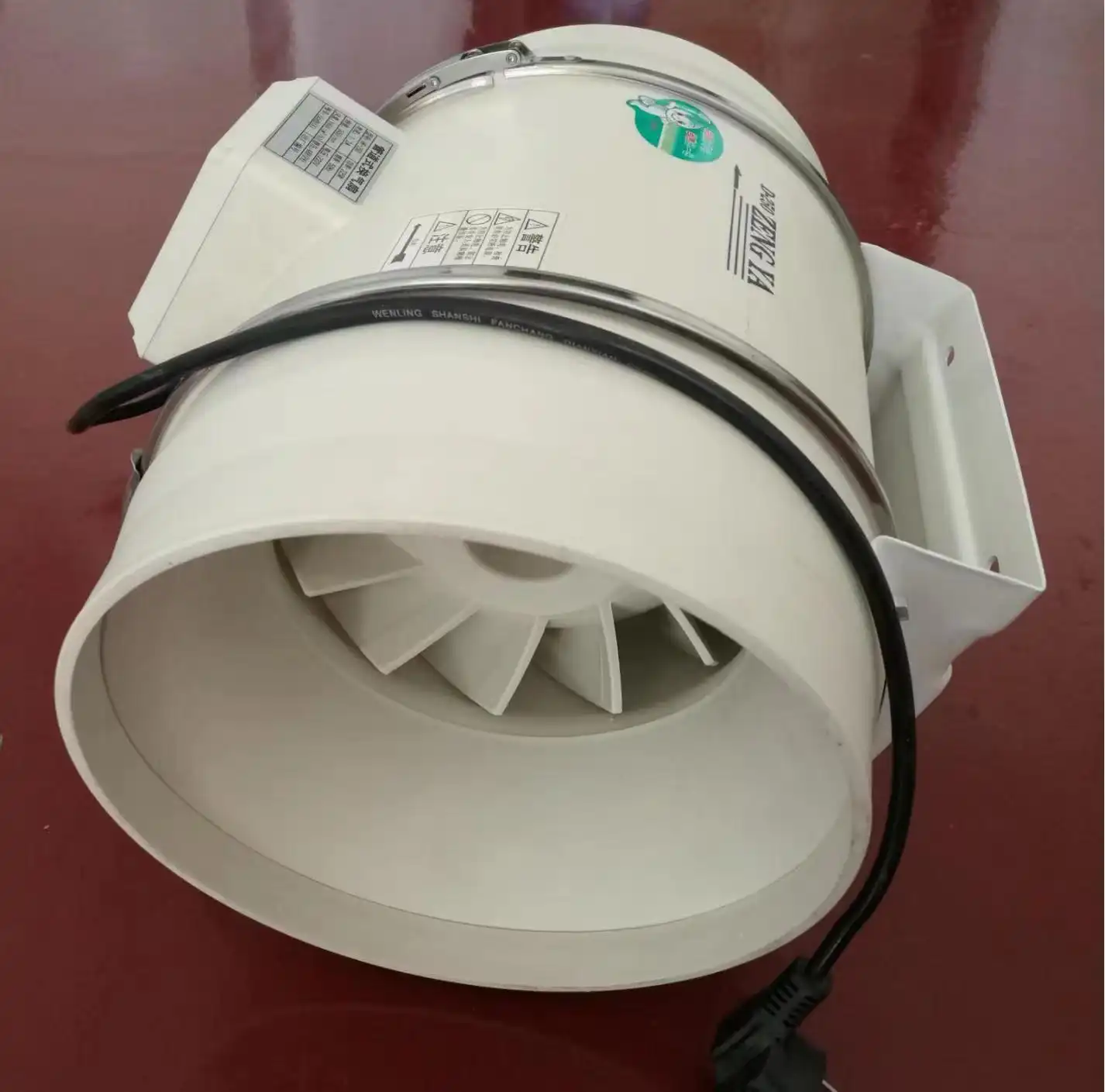
Technical Specifications and Performance Factors
Airflow Capacity and Static Pressure Requirements
When selecting a Mixed Flow Fan for laboratory or industrial applications, understanding the relationship between airflow capacity and static pressure is fundamental to making the right choice. Mixed Flow Fans offer a unique advantage in this regard, as they combine the high-volume capabilities of axial fans with the pressure-generating capabilities of centrifugal designs. This hybrid approach makes them exceptionally versatile across various applications. Before making a selection, it's essential to accurately calculate the required airflow capacity, typically measured in cubic meters per hour (m³/h), based on the size of the space and the number of air changes required per hour according to industry standards and regulations. For instance, Xi'an Xunling's range of Mixed Flow Fans offers models with airflow capacities ranging from 220 m³/h in smaller 100mm diameter units to impressive 2900 m³/h in larger 315mm units, making them suitable for installations of various scales.
Additionally, static pressure considerations are equally important, as they determine the fan's ability to overcome resistance in the ventilation system. Mixed Flow Fans excel in applications with moderate pressure requirements, with Xi'an Xunling's models delivering static pressure capabilities from 150 Pa to 630 Pa. This makes them ideal for laboratory settings where ductwork creates resistance that standard axial fans might struggle to overcome. When evaluating your needs, consider not just current requirements but also potential future expansions or modifications to your ventilation system. The working principle of Mixed Flow Fans, where air enters axially and is discharged at an angle to the axis, contributes to their ability to maintain efficient airflow even when facing moderate backpressure. This design principle makes them particularly valuable in complex laboratory setups where maintaining consistent airflow is critical for experimental accuracy and safety.
Noise Level Considerations
Noise level represents one of the most critical factors when selecting Mixed Flow Fans, particularly in sensitive environments like laboratories, research facilities, and medical settings where excessive noise can disrupt concentration and precision work. Mixed Flow Fans offer a significant advantage in this area compared to traditional ventilation solutions, as their hybrid design inherently reduces noise generation. When evaluating noise specifications, it's important to understand that decibel (dB) ratings are typically measured at a standard distance under specific conditions, and the actual noise experience may vary depending on installation parameters and environmental acoustics. Xi'an Xunling's Mixed Flow Fans feature impressively low noise profiles, ranging from just 31 dB in smaller models to 65 dB in the largest configurations, making them suitable for even the most noise-sensitive applications.
The low noise operation of these Mixed Flow Fans stems from their specially designed blade configurations that minimize turbulence while maintaining efficient airflow patterns. This design consideration is particularly valuable in educational settings where teaching and learning require minimal distraction, or in scientific research environments where sensitive equipment might be affected by excessive vibration. When selecting a fan, consider not just the raw noise specifications but also the frequency profile of the sound produced, as certain frequencies can be more disruptive than others depending on the environment. Additionally, Many of Xi'an Xunling's Mixed Flow Fans incorporate vibration dampening elements that further reduce noise transmission to surrounding structures, enhancing the overall acoustic experience. For environments with stringent noise constraints, it may be beneficial to select a slightly larger model operating at a lower speed rather than a smaller model operating at maximum capacity, as this approach typically results in quieter operation while still meeting airflow requirements. This strategic approach to selection demonstrates why understanding noise considerations extends beyond simple decibel ratings when choosing the optimal Mixed Flow Fan for your application.
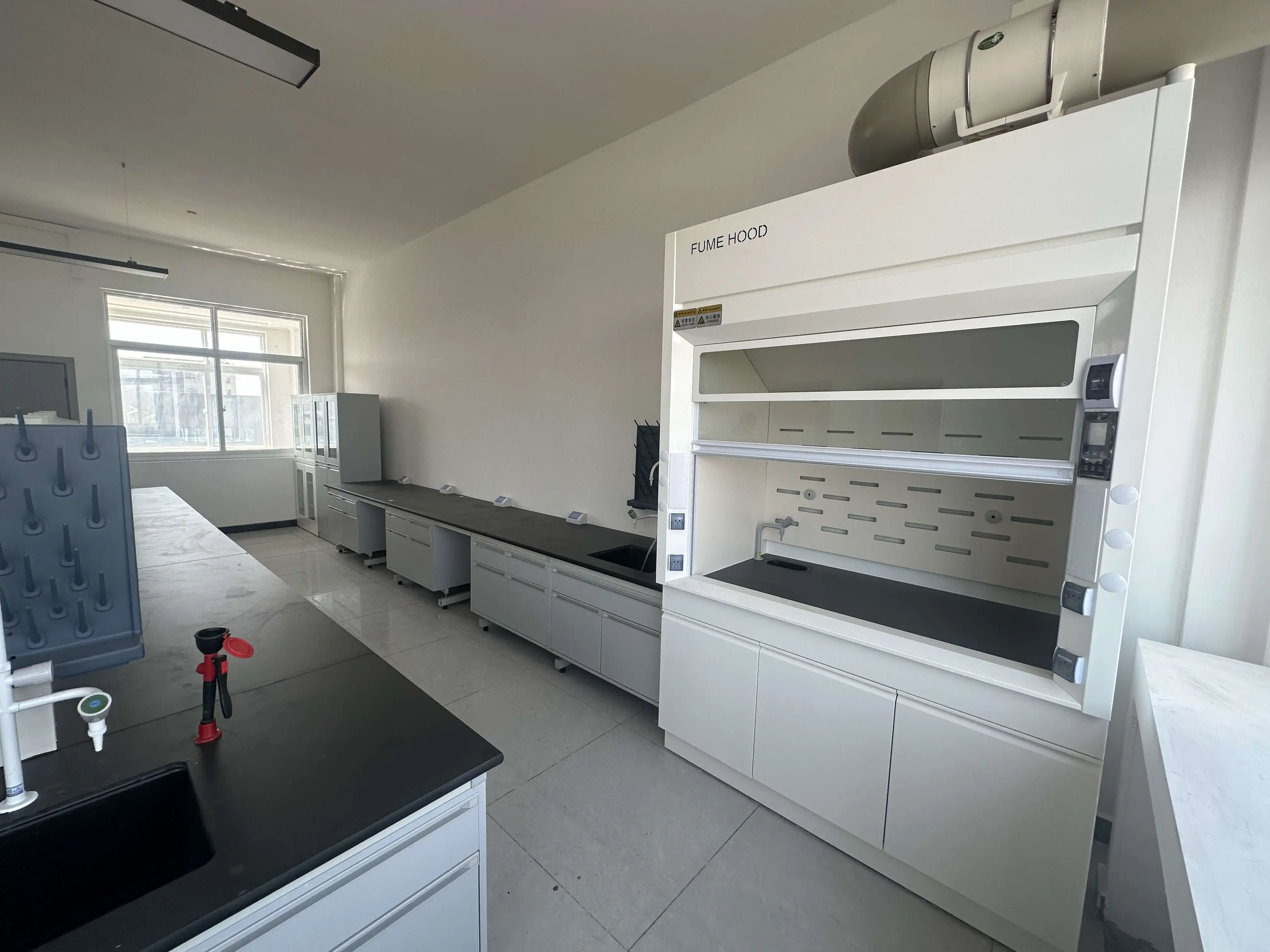
Energy Efficiency and Power Consumption
Energy efficiency stands as a paramount consideration in today's environmentally conscious and cost-sensitive operational environments. When selecting Mixed Flow Fans, understanding both immediate power requirements and long-term efficiency metrics can significantly impact both operational costs and environmental footprint. Mixed Flow Fans inherently offer energy advantages over some traditional ventilation solutions due to their hybrid design that optimizes airflow while minimizing wasted energy. Xi'an Xunling's Mixed Flow Fan series demonstrates this efficiency across their power spectrum, with models ranging from 35W in smaller diameters to 320W in larger configurations, all designed to maximize airflow per watt consumed. This careful engineering results in ventilation solutions that deliver exceptional performance while minimizing energy costs over the equipment's operational lifetime.
When evaluating energy efficiency, it's essential to consider not just the rated power consumption but also the fan's efficiency at various operating points within its performance curve. Mixed Flow Fans typically maintain higher efficiency across a broader range of operating conditions compared to purely axial or centrifugal designs, making them particularly valuable in applications with varying ventilation demands. Xi'an Xunling's fans feature optimized impeller designs that ensure air moves with minimal turbulence and energy loss, contributing to their overall efficiency profile. Additionally, their rotate speeds, which range from 2450 to 2600 r/min depending on the model, are calibrated to find the optimal balance between airflow generation and energy consumption.
For laboratories and industrial facilities implementing energy management programs or pursuing certification in environmental standards, selecting high-efficiency Mixed Flow Fans can contribute significantly to overall energy reduction goals. Beyond immediate energy savings, efficient fans also generate less heat during operation, potentially reducing cooling loads in temperature-sensitive environments. When calculating the total cost of ownership, it's worth considering that a more energy-efficient fan may command a higher initial investment but often delivers substantial savings over its operational lifetime. Xi'an Xunling's focus on energy-efficient designs reflects the growing industry recognition that sustainability and operational efficiency are not competing priorities but complementary aspects of modern ventilation system design. By carefully matching fan efficiency to application requirements, facilities can achieve optimal air quality while minimizing energy consumption.
Environmental and Installation Considerations
Corrosion Resistance and Material Selection
The selection of construction materials for Mixed Flow Fans represents a critical decision that directly impacts their longevity, performance, and suitability for specific laboratory environments. In corrosive or harsh conditions, standard materials may degrade rapidly, compromising both safety and functionality. Xi'an Xunling's Mixed Flow Fans are predominantly constructed from high-quality polypropylene (PP), which offers exceptional resistance to a wide range of chemicals, acids, and bases commonly found in laboratory settings. This material choice ensures that the fans maintain their structural integrity and performance characteristics even when exposed to corrosive fumes, vapors, or atmospheric conditions that would quickly degrade lesser materials. When selecting a fan for environments where particularly aggressive chemicals are present, it's essential to verify the compatibility of the construction materials with the specific substances involved, as even resistant materials like PP have their limitations with certain chemical compounds.
Beyond chemical resistance, material selection also influences other performance factors such as weight, vibration characteristics, and even airflow efficiency. The PP construction of Xi'an Xunling's Mixed Flow Fans contributes to their relatively lightweight design, simplifying installation and reducing structural load requirements. Additionally, this material choice offers inherent damping properties that help minimize vibration and associated noise during operation. For applications in food processing, pharmaceutical manufacturing, or cleanroom environments, the non-contaminating nature of high-quality PP becomes particularly valuable, as it doesn't shed particles or introduce contamination into the airstream. Mixed Flow Fans with metal components may require special coatings or treatments to achieve similar protection levels.
When evaluating material options for Mixed Flow Fans, it's also worth considering the temperature range of the application environment, as different materials exhibit different performance characteristics across temperature gradients. Xi'an Xunling's PP-constructed fans maintain consistent performance across typical laboratory temperature ranges, but applications involving extreme heat or cold may require specialized material selections. The combination of corrosion resistance, lightweight construction, and non-contaminating properties makes PP an ideal material choice for Mixed Flow Fans in most laboratory and many industrial applications, offering a balance of performance, longevity, and value that few alternative materials can match. This thoughtful material selection reflects Xi'an Xunling's deep understanding of the demanding environments in which their Mixed Flow Fans operate.
Installation Requirements and Space Constraints
Installation considerations and spatial requirements play a pivotal role in the selection process for Mixed Flow Fans, particularly in laboratory environments where space is often at a premium and layout flexibility may be limited. Mixed Flow Fans offer distinct advantages in this regard, as their compact design and efficient use of space make them ideal for installations where traditional ventilation solutions might prove impractical. When evaluating Mixed Flow Fans for your application, careful attention must be paid to the physical dimensions of the units, which in Xi'an Xunling's case range from 100mm to 315mm in diameter, allowing for precision matching to available installation space. Beyond the basic dimensional considerations, proper installation requires thoughtful planning regarding duct connections, electrical supply positioning, access for maintenance, and appropriate clearances to ensure optimal airflow patterns are maintained.
The versatility of Mixed Flow Fans is particularly valuable in retrofit applications where existing infrastructure may impose significant constraints on new equipment installation. Their ability to generate substantial airflow while occupying minimal space makes them ideal solutions for laboratories seeking to upgrade ventilation capabilities without major structural modifications. Xi'an Xunling's Mixed Flow Fans feature standardized connection dimensions that facilitate integration with existing ductwork and ventilation systems, simplifying the installation process and reducing associated costs. Additionally, their balanced operation minimizes vibration transmission to surrounding structures, often allowing for installations in locations where more vibration-prone equipment would be problematic.
When planning for installation, consideration should also be given to the orientation requirements of Mixed Flow Fans, as some models may perform optimally in specific mounting positions. While many Mixed Flow Fans can be installed in various orientations, performance characteristics may vary slightly depending on positioning. Xi'an Xunling's engineering team typically provides detailed installation guidelines specific to each model to ensure optimal performance. For complex installations or applications with unusual constraints, Xi'an Xunling offers consultation services to help identify the most effective installation approach. The easy installation characteristics of Mixed Flow Fans translate directly to reduced labor costs and shorter installation timeframes, further enhancing their value proposition for laboratory and industrial applications. This combination of compact design, flexible installation options, and straightforward integration makes Mixed Flow Fans particularly well-suited to the space-constrained environments commonly found in modern laboratories and research facilities.
Regulatory Compliance and Safety Standards
Navigating the complex landscape of regulatory requirements and safety standards represents a critical aspect of selecting appropriate Mixed Flow Fans for laboratory and industrial applications. Different industries, regions, and application types may be subject to varying regulatory frameworks that dictate specific performance parameters, safety features, and certification requirements. Mixed Flow Fans intended for use in facilities handling hazardous materials, for instance, may need to comply with explosion-proof standards or specialized containment regulations. Similarly, fans used in medical or pharmaceutical environments often must meet stringent cleanliness and contamination control standards. Xi'an Xunling's Mixed Flow Fans are engineered with regulatory compliance in mind, featuring CE certification and ISO 9001 quality management system compliance, providing assurance that these products meet internationally recognized standards for safety and quality.
Beyond basic certification, specific application environments may require Mixed Flow Fans with particular safety features such as thermal protection, specialized electrical insulation, or specific airflow monitoring capabilities. For applications involving potentially explosive atmospheres, fans must be evaluated against relevant ATEX or equivalent standards to ensure they don't present ignition risks. Xi'an Xunling's engineering team maintains current knowledge of evolving regulatory requirements across various industries and can provide guidance regarding which fan models meet specific regulatory needs. This expertise proves particularly valuable when navigating the often-complex interplay between different regulatory frameworks that may apply to a single installation.
When selecting Mixed Flow Fans, it's also important to consider how the equipment contributes to the overall compliance posture of the facility. In many laboratory environments, ventilation systems play a critical role in maintaining safe working conditions and environmental protection, making their proper selection and operation a central component of regulatory compliance strategies. Xi'an Xunling's Mixed Flow Fans incorporate features that simplify compliance verification, such as clearly marked performance parameters and comprehensive technical documentation. For installations where specific air change rates or pressure relationships must be maintained to comply with laboratory safety standards, the reliable performance and consistent operation of these Mixed Flow Fans provide confidence that compliance requirements will be consistently met. This attention to regulatory detail and commitment to compliance-oriented design reflects Xi'an Xunling's understanding that their fans often serve not just as ventilation equipment but as crucial components in comprehensive safety and compliance systems.
Application-Specific Selection Factors
Laboratory and Research Environment Requirements
Laboratory and research environments present uniquely demanding conditions for ventilation systems, requiring Mixed Flow Fans that can deliver precise performance while operating within strict parameters for noise, cleanliness, and reliability. In these settings, maintaining proper air exchange rates is not merely a comfort consideration but often a critical safety requirement that protects researchers from harmful fumes and airborne contaminants. Mixed Flow Fans are particularly well-suited to these environments due to their ability to maintain consistent airflow even when faced with the variable resistance typical of laboratory ductwork systems. Xi'an Xunling's range of Mixed Flow Fans, with airflow capacities spanning from 220 m³/h to 2900 m³/h, allows for precise matching to laboratory requirements of various scales, from small analytical laboratories to large research facilities. When selecting fans for these environments, consideration must be given not just to current needs but also to potential future expansions or changes in research focus that might alter ventilation requirements.
The chemical compatibility of fan materials becomes especially important in research settings where exposure to corrosive substances is common. The PP construction of Xi'an Xunling's Mixed Flow Fans offers excellent resistance to many laboratory chemicals, making them ideal for installations in chemistry laboratories, analytical facilities, and similar environments where corrosive vapors may be present. Beyond material considerations, the controlled noise profile of these fans—ranging from 31 dB to 65 dB depending on the model—ensures they don't interfere with the concentration and precision required in research work. This quiet operation becomes particularly valuable in educational laboratories where communication and instruction must occur alongside running equipment.
For specialized research environments such as cleanrooms or containment facilities, additional factors such as particulate generation, cleanability, and pressure control capabilities may influence fan selection. Mixed Flow Fans with smooth, non-shedding surfaces and minimal crevices where contaminants might accumulate offer advantages in these hyper-clean environments. Xi'an Xunling's engineering team has extensive experience designing ventilation solutions for specialized research environments and can provide guidance on selecting Mixed Flow Fans that meet specific cleanliness requirements. Additionally, for research involving biohazardous materials or other dangerous substances, fan reliability becomes paramount, as even brief ventilation failures could create hazardous conditions. The robust construction and reliable performance of quality Mixed Flow Fans provide the dependability essential in these critical applications, making them trusted components in laboratory safety systems worldwide.
Industrial and Commercial Application Considerations
Industrial and commercial applications present distinct challenges for ventilation systems, often requiring Mixed Flow Fans capable of handling higher volumes, operating continuously, and withstanding more rugged environmental conditions than those found in laboratory settings. In these environments, factors such as dust loads, temperature extremes, and variable operating conditions may significantly influence fan selection. Mixed Flow Fans shine in industrial applications requiring a balance of airflow and pressure, such as material transfer systems, process ventilation, and general area exhaust. Xi'an Xunling's larger Mixed Flow Fan models, with capabilities reaching 2900 m³/h airflow and static pressures up to 630 Pa, provide robust performance for demanding industrial environments while maintaining the efficiency advantages inherent to the mixed flow design. When selecting fans for industrial applications, careful analysis of process requirements, environmental factors, and potential contaminants becomes essential to ensuring appropriate performance and equipment longevity.
The durability of construction becomes particularly important in industrial settings where fans may be exposed to harsh conditions, physical impacts, or corrosive atmospheres. Xi'an Xunling's PP-constructed Mixed Flow Fans offer excellent chemical resistance and durability, making them suitable for a wide range of industrial environments including food processing, chemical manufacturing, and agricultural technology service centers. The streamlined design of these fans, with minimal protrusions or complex geometries, also contributes to their reliability in dusty or particulate-laden environments where build-up on fan components can compromise performance. For applications involving particularly abrasive materials or extreme conditions, special attention must be paid to material selection and protective features to ensure acceptable service life.
Energy efficiency takes on added significance in industrial applications where fans may operate continuously, translating even small efficiency improvements into substantial energy savings over time. The inherent efficiency of the mixed flow design, combined with Xi'an Xunling's optimized impeller configurations, delivers excellent performance-to-energy ratios across their product range. For industrial settings with variable ventilation demands, fans capable of efficient operation across different speed ranges may offer significant advantages, as they can adjust to changing conditions without sacrificing efficiency. Additionally, the moderate noise levels of Mixed Flow Fans provide benefits in industrial environments where worker comfort and compliance with occupational noise exposure regulations must be considered. This combination of robust performance, energy efficiency, and reasonable noise characteristics makes appropriately selected Mixed Flow Fans excellent choices for a wide range of industrial and commercial ventilation applications, from small workshop environments to large manufacturing facilities.
Specialized Application Requirements
Beyond standard laboratory and industrial uses, Mixed Flow Fans find application in numerous specialized environments where their unique performance characteristics provide distinct advantages. In medical facilities, for instance, the combination of high reliability, low noise, and efficient operation makes Mixed Flow Fans ideal for areas ranging from laboratory spaces to treatment rooms where patient comfort and infection control are paramount concerns. The balanced airflow pattern of mixed flow designs helps minimize turbulence that might distribute contaminants, while their efficient operation contributes to the energy conservation goals increasingly important in healthcare settings. Xi'an Xunling's Mixed Flow Fans with their PP construction offer excellent chemical resistance for medical environments where cleaning and disinfection protocols often involve aggressive chemicals. When selecting fans for these applications, additional considerations might include cleanability, resistance to disinfectants, and compatibility with specialized filtration systems often required in medical environments.
Environmental monitoring represents another specialized application area where Mixed Flow Fans excel. Air and water quality testing stations require ventilation systems that operate reliably in varying conditions while maintaining precise airflow characteristics to ensure accurate sampling. The consistent performance of Mixed Flow Fans across different operating conditions makes them particularly valuable in these applications. Similarly, in agricultural technology service centers and product quality testing stations, the ability to maintain controlled environmental conditions often depends on reliable, efficient ventilation systems. Xi'an Xunling's range of Mixed Flow Fans with varying capacities allows for precise matching to these specialized requirements, ensuring optimal performance in these critical applications.
For specialized applications involving potentially hazardous materials or processes, additional safety features and certifications may influence fan selection. Depending on the specific hazards present, fans may need to incorporate features such as explosion-proof motors, specialized sealing to prevent gas leakage, or materials certified for use with particular substances. Xi'an Xunling's engineering team can provide guidance regarding specialized models suitable for these more demanding applications. Additionally, some specialized environments may require fans capable of withstanding unusual conditions such as high humidity, exposure to specific chemicals not commonly encountered, or operation in areas with space constraints that preclude standard installations. The versatility of Mixed Flow Fan designs, combined with the possibility of customization when standard products don't meet specialized needs, makes them valuable solutions across an exceptionally wide range of applications beyond standard laboratory and industrial uses. This adaptability to specialized requirements represents one of the key strengths of Mixed Flow Fans in today's diverse ventilation marketplace.
Conclusion
Selecting the right Mixed Flow Fan requires careful consideration of numerous factors including technical specifications, environmental conditions, installation requirements, and application-specific needs. By thoroughly evaluating these elements, you can identify a fan that delivers optimal performance, efficiency, and reliability for your specific requirements. Xi'an Xunling Electronic Technology Co., Ltd. offers a comprehensive range of Mixed Flow Fans designed to meet diverse needs across laboratory, research, medical, and industrial applications.
Why settle for less when your ventilation needs deserve the best? At Xi'an Xunling Electronic Technology Co., Ltd., we pride ourselves on delivering exceptional quality Mixed Flow Fans backed by our 5-year warranty and supported by our extensive manufacturing capabilities. With 5-day delivery, custom design options, and comprehensive OEM support, we provide the complete ventilation solution your facility deserves. Our team of experts is ready to help you select the perfect Mixed Flow Fan for your specific application. Experience the difference that comes with over two decades of specialized manufacturing expertise. Contact Us today at xalabfurniture@163.com to discuss how our Mixed Flow Fans can transform your ventilation system's performance.
References
1.Johnson, M. R., & Smith, K. L. (2023). Advances in Laboratory Ventilation Systems: A Comprehensive Review of Mixed Flow Technologies. Journal of Laboratory Safety and Equipment, 45(3), 215-232.
2.Chen, H., Williams, P., & Thompson, R. (2022). Selection Criteria for Industrial Ventilation: Comparative Analysis of Axial, Centrifugal, and Mixed Flow Systems. Industrial Ventilation Quarterly, 18(2), 87-103.
3.Ramirez, L., & Patel, S. (2023). Energy Efficiency in Laboratory Ventilation: Case Studies and Best Practices. Energy Conservation in Scientific Facilities, 29(4), 412-428.
4.Zhang, W., & Anderson, J. (2024). Material Selection for Corrosive Environment Ventilation: Longevity and Performance Considerations. Chemical Engineering Equipment Journal, 37(1), 54-71.
5.Miller, T., & Thompson, K. (2022). Noise Reduction Strategies in Laboratory Ventilation Systems: A Technical Analysis. Acoustical Engineering Review, 14(3), 278-295.
6.Yamamoto, K., & Garcia, E. (2023). Regulatory Compliance for Laboratory Ventilation Systems: International Standards and Implementation Guidelines. Global Laboratory Standards Review, 8(2), 112-129.







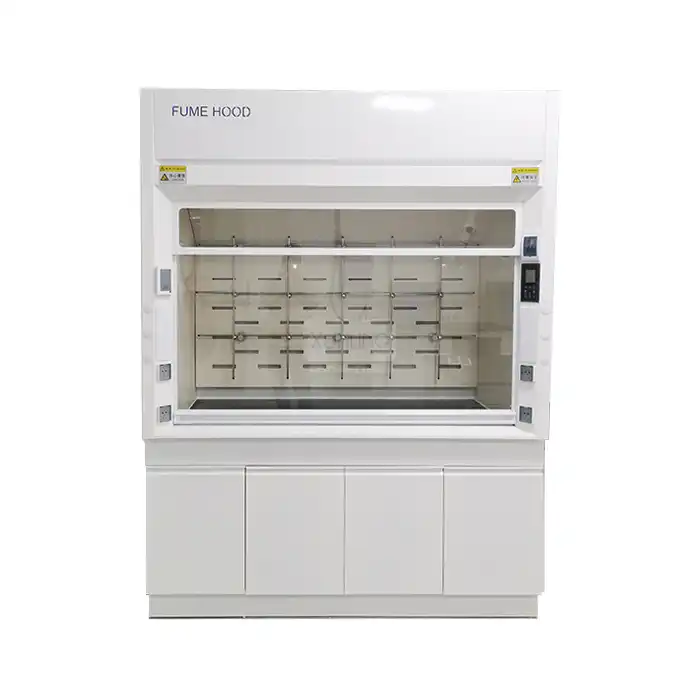

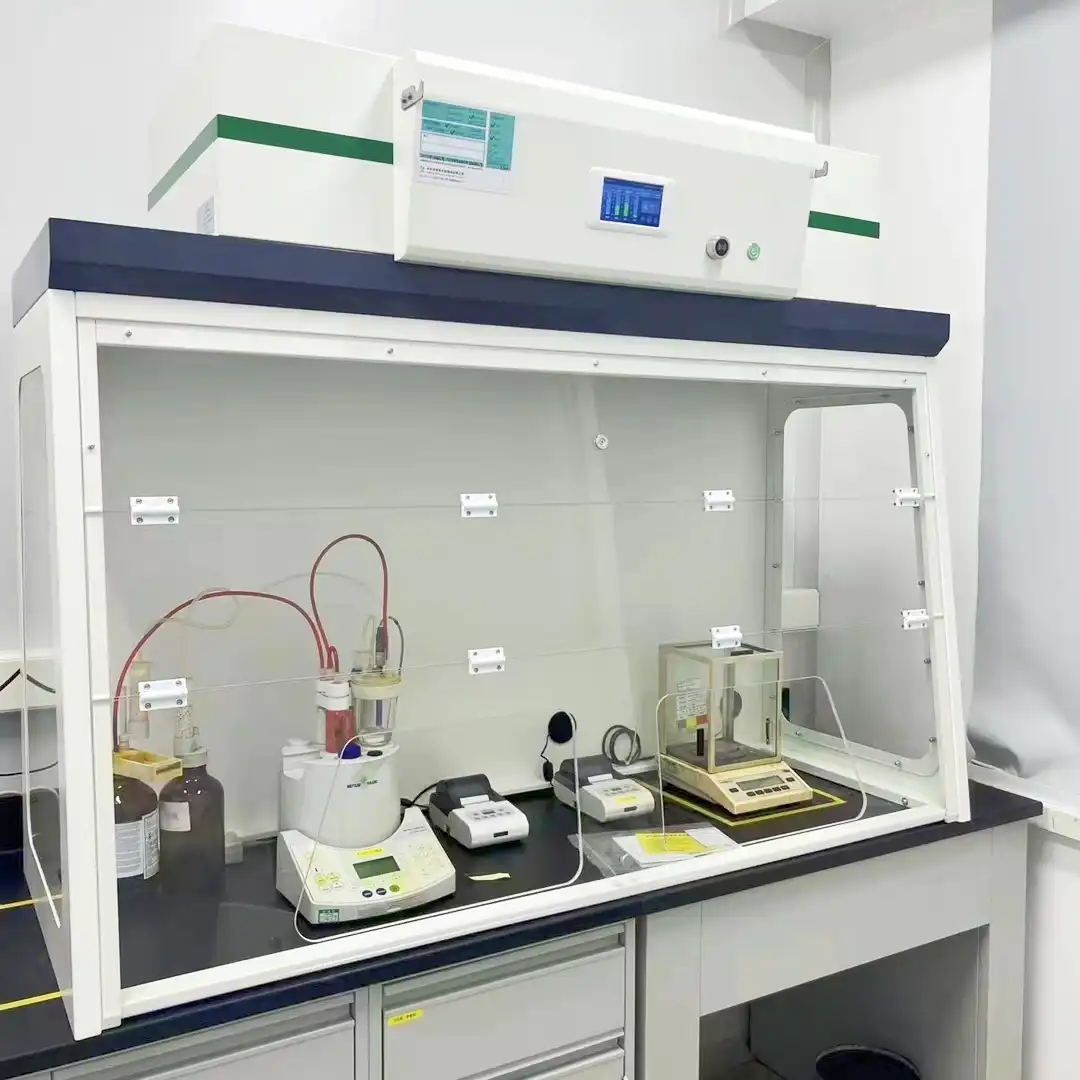
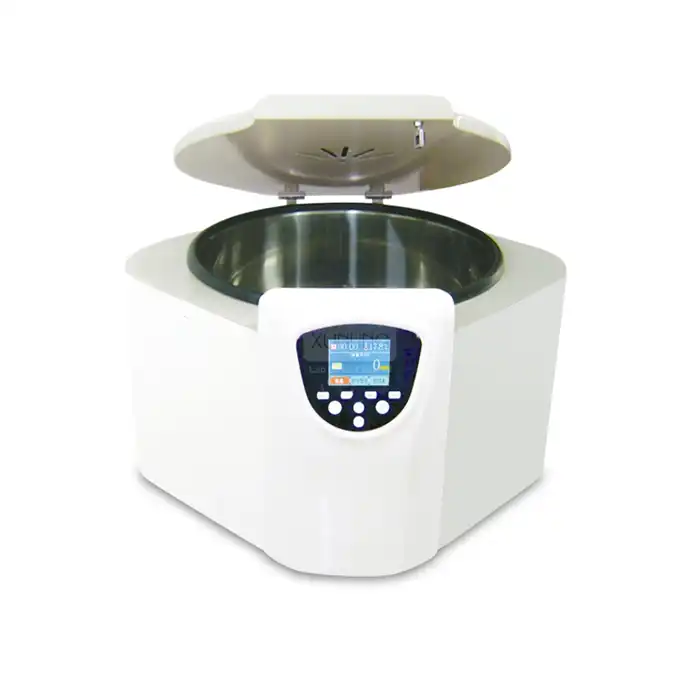
_1735284212689.webp)
